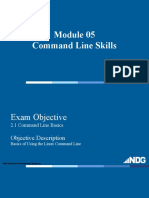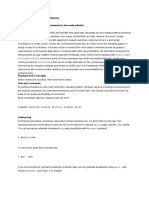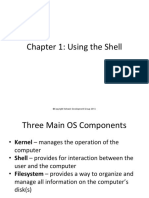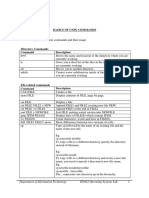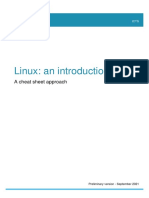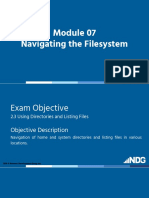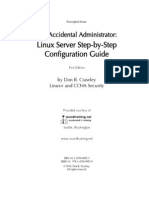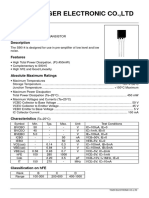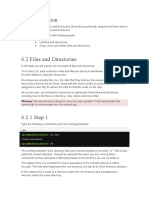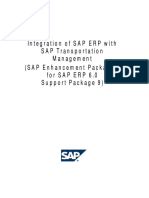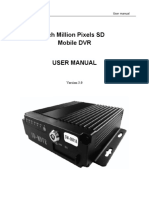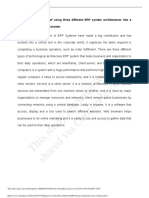0% found this document useful (0 votes)
73 views22 pages4-Linux Modulo-4
This document provides an introduction to using the command line interface (CLI) in Linux. It discusses how the CLI relies on typing commands rather than using graphical icons. While initially challenging, the CLI allows for more precise control and automation of tasks compared to a graphical user interface (GUI). It then describes how to access the terminal, the structure and purpose of the command prompt, different shells like BASH, how to properly format commands using options and arguments, and how the command history works.
Uploaded by
Tux TuxCopyright
© © All Rights Reserved
We take content rights seriously. If you suspect this is your content, claim it here.
Available Formats
Download as DOCX, PDF, TXT or read online on Scribd
0% found this document useful (0 votes)
73 views22 pages4-Linux Modulo-4
This document provides an introduction to using the command line interface (CLI) in Linux. It discusses how the CLI relies on typing commands rather than using graphical icons. While initially challenging, the CLI allows for more precise control and automation of tasks compared to a graphical user interface (GUI). It then describes how to access the terminal, the structure and purpose of the command prompt, different shells like BASH, how to properly format commands using options and arguments, and how the command history works.
Uploaded by
Tux TuxCopyright
© © All Rights Reserved
We take content rights seriously. If you suspect this is your content, claim it here.
Available Formats
Download as DOCX, PDF, TXT or read online on Scribd
/ 22




